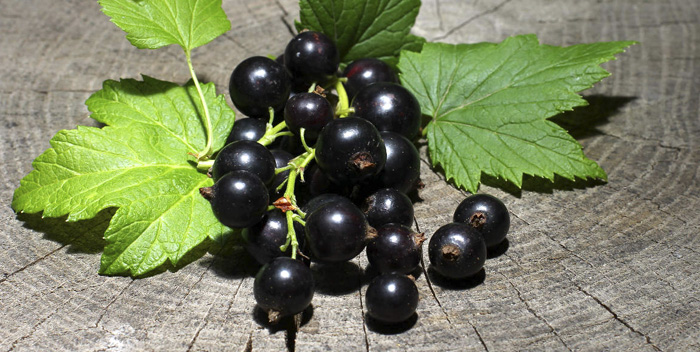Currant is a very useful berry, most often it is used to make various compotes and juices, and it is also a part of various jams and preserves.
To grow such a plant at the dacha is quite simple. Also, red currant rather unpretentious plant.
Table of contents
How to grow red and black currants?
In order for a red or black currant to develop well and bring abundant and annual harvests, it is necessary to choose the right place for planting so that the bushes are comfortable:
- currants are not recommended to be planted on the places where the old bushes of this crop or the gooseberry were growing;
- the groundwater level must not exceed 1.5 meters, otherwise the root system may rot or even die;
- It is also not recommended to plant currants in low-lying areas where rainwater or melting snow accumulates;
- Shrub health and yield directly depends on the amount of sunlight. In the absence of these indicators, the plant begins to hurt and ceases to resist pests, the berries become less or disappear altogether;
- gusty winds have the same effect on currants, so the place should be not only not shaded, but also protected from the north and east winds. For the cultivation of the bushes do not need a special agricultural machinery. Everything can be done by hand.
Currants grow well in almost any soil, exceptions are:
- sandy ground;
- rocky ground;
- swampy areas.
Also, this culture prefers a neutral soil, therefore, in the presence of acidic soil, it is necessary to preliminate lime. To this end, 400 grams of crushed limestone or 300 grams of hydrated lime are added to one square meter of land.
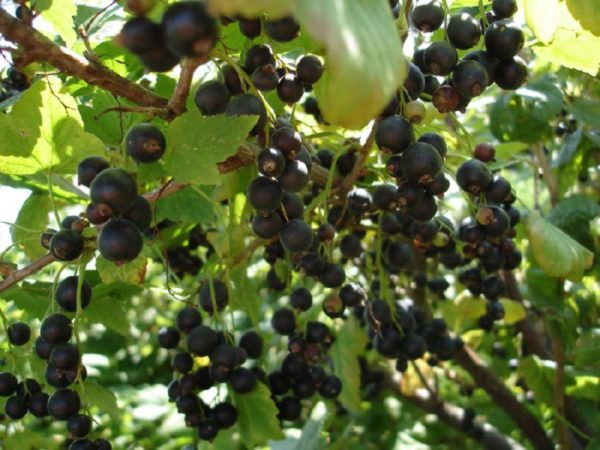
Terms for landing at the dacha
Currants can be planted in spring (late March - early April), and in the fall (mid-September - early October). But experienced gardeners recommend to perform exactly the autumn planting, because it has a lot of advantages:
- Seedlings have time to take root before the onset of cold weather and tolerate winter frosts. And during the spring carrying out of this procedure, the shrub actively develops the root system, but also spends energy on growing foliage and leaves to spend the winter in a weakened form, because of which he may not tolerate frosty weather and simply die;
- Also, the plants planted in autumn move faster in growth and, accordingly, begin to bear fruit faster.
Planting and cultivation of currants
Soil preparation
The initial stage of planting currants is the timely preparation of the soil:
- During the autumn planting, the pit is prepared approximately 3-4 weeks before the procedure itself., and during the spring planting the pit must be dug in September. Preliminary preparation is needed to make the soil more fertile;
- Given the biological structure of the root system of red currants, the depth and width of the pit is usually 40-50 centimeters;
- During excavation of the pit, the lower layer is folded separately from the top. After which the fertile (upper) ground is mixed with:
- 2 buckets of compost, humus or rotted compost;
- 100 grams of superphosphate;
- 90 grams of potassium sulfate.
- In this form, the planting pit is left until the seedling is planted.
Landing methods
Single landing
With such planting currant brings the greatest amount of crop and lives much longer than with other methods. Experienced gardeners recommend planting plants at a distance of at least two meters from other trees and shrubs.

Ordinary landing
This method is suitable for those gardeners who want to collect the maximum number of berries from the minimum areas. Usually ordinary landing is used in commercial cultivation of red currants. The only disadvantage is the rapid deterioration of plants and, accordingly, their rapid death.
Using this method, it is necessary to take into account the characteristics of each variety and shrubs with a lush crown to plant at a distance of 120-150 centimeters, and plants with a more compact arrangement of shoots at a distance of 70-110 centimeters.
Landing on the trellis
To achieve the desired effect, shrubs are planted at a distance of 50-100 centimeters from each other. After 2-3 years, the currant branches are fixed on the installed trellis. In this case, you can get a continuous fruiting plane.
Landing rules
The technology of planting black currant is as follows:
- It is best to have a seedling in a hole at an angle of 45 degrees, but a vertical fit is also possible, which is much simpler and more familiar;
- The root neck should be 5-6 centimeters deep into the ground;
- when digging a hole, periodically shake the seedling to avoid the formation of air pockets between the roots of the plant;
- At the next stage, the ground must be carefully tamped.
- For a plant to stick well in a new place, it is not enough just to plant it correctly.. It is necessary to provide proper care for a young bush:
- Immediately after planting, a small groove is dug around the currant, into which you need to gradually pour in a bucket of water. Such a procedure will not only moisten the soil, but also improve the contact of the roots with the soil;
- After the water dries, the groove is filled with humus, peat or just dry earth;
- Also, the land around the shrub can be mulched to a height of 5-10 centimeters;
- To speed up the formation of the crown of the shrub and avoid the appearance of weak gains immediately after planting, all branches of the plant are shortened to 2-4 buds.
Proper planting procedures are the key to success in growing a healthy shrub and obtaining a rich harvest.
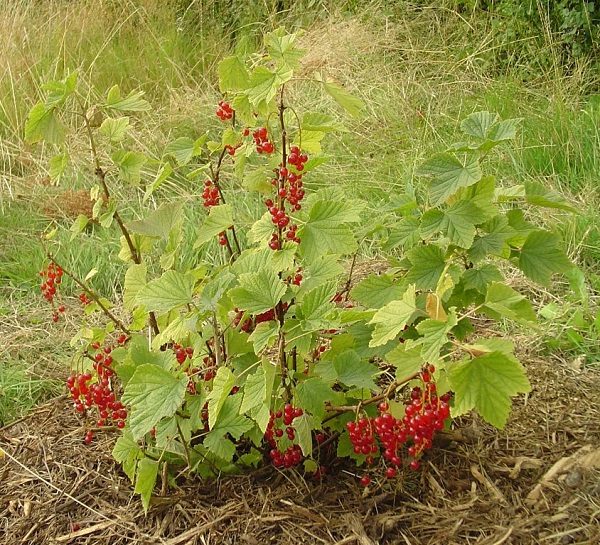
Care
In order for the shrub to give as much harvest as possible, it is necessary to properly care for it and not to neglect even the most insignificant at first glance procedures.
Loosening
The earth around the shrub needs to be periodically loosened so that the root system receives the required amount of moisture and oxygen. In the root zone, loosening is carried out to a depth of 5-6 centimeters, gradually increasing to a depth of 15 centimeters as it recedes from the base of the plant.
Watering
Currants can tolerate short-term droughts, but to obtain abundant crops, it is necessary to maintain 80 percent soil moisture. To check this indicator, you can dig up the earth, located at a depth of 30 centimeters, it should retain its shape when squeezed.
During watering, you need to soak the ground with water for 40-50 centimeters, for this young shrubs need 2 buckets of water, and an adult 4-5. There are several ways to water:
- you can dig a groove around the plant and gently pour water into it;
- for large landings, they pull out a trench and install a hose with water in it.
Top dressing
In order for the bushes to start a bountiful and large crop, it is necessary to timely make a variety of top dressing that feeds the soil. In the first 2 years after planting do not need to fertilize the land, the plant will have enough nutrients introduced during planting.
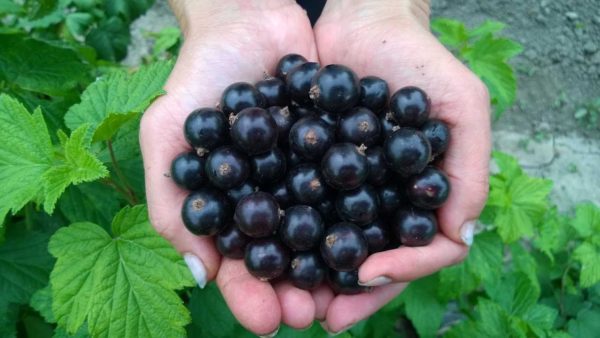
Disease and pest prevention
To avoid the appearance of diseases and pests, it is necessary to process the shrub with special preparations and carry out sanitary and thinning pruning.
In spring:
- Currants are watered once in early May, but if winter was a little snowy, and spring was dry, then this procedure is postponed to April;
- Immediately after the snow melts it is necessary to thoroughly gnaw the earth;
- In the spring, the tree is treated for diseases and pests with the help of special preparations or Brodsky fluids;
- During this period, it is imperative to carry out thinning pruning, removing all frozen, damaged or over-thickening branches.
At the beginning of the leafing currants fertilized with 50 grams of urea and 500 grams of wood ash. Scatter feed dressing under a bush, and then gently bury. It is worth remembering that moisture is needed to dissolve fertilizers, so if the ground is dry and no precipitation has occurred for a long time, the procedure should be carried out after abundant watering.
During flowering, red currants are fertilized with complex mineral fertilizer and bird droppings.
Also in spring, the shrub needs to be fed with organic fertilizers (humus, compost, manure, etc.). On fertile soils, this procedure is carried out 1 time in 3 years, but on poor lands it will have to be repeated annually.
Summer:
- In summer, the shrub needs to be watered as the soil dries,under normal weather and no drought, the procedure is carried out 1 time in 2 weeks;
- Experienced gardeners recommend slightly loosening the ground after each watering;
- Also in the summer, you need to monitor the purity of the root zone and remove all weeds.
- During the formation and pouring of fruits currants can be sprayed with growth stimulants, but the most safe and effective method is the introduction of liquid fertilizers after flowering. Such fertilizers include liquid fertilizer with extract of mullein, bird droppings or slurry.
- Many gardeners use infusions prepared on the basis of various herbs, fruit peels, etc., as a summer feeding. These tools can be used continuously and make with each watering.
In the fall:
- In the autumn, the amount of watering is reduced to zero, it will be mandatory to add copious amounts of moisture in preparing the shrub for winter;
- Also in the autumn it is recommended to break through the ground so that the roots receive as much oxygen as possible in the winter;
- It is very important to carry out sanitary pruning in the fall, during which all dry, diseased and damaged branches will be removed. This is necessary in order to get rid of diseases and pests;
- After harvesting under the shrubs make:
- 50 grams of superphosphate;
- 20 grams of potassium sulfate;
- Organic fertilizers (on fertile soils 1 time in 2 years).
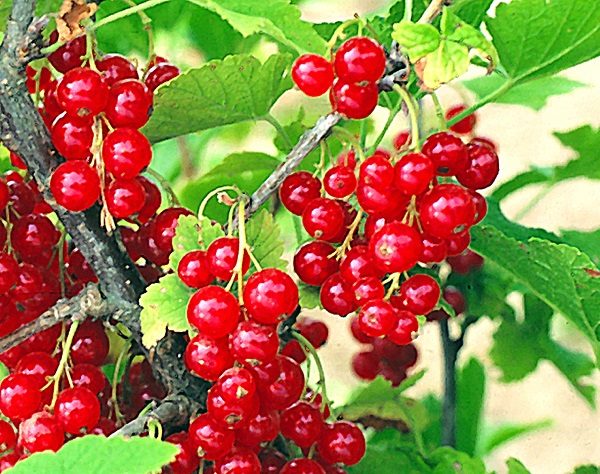
Preparing for the winter in the country
Although the black currant is a rather winter-hardy crop, it still needs additional protection in winter. To do this, you can use one of the following methods:
All branches of the shrub need to be carefully bent to the ground and you need to put on top of the number of bricks that will serve as a load. When carrying out such a procedure is very important not to damage the branches of the plant. Snow is a natural defense against harsh temperatures, so the use of this method is possible only during a snowy winter.
You can also wrap each branch of a shrub in a special agrofibre, while it is desirable to add insulation in the form of mineral wool. Such a tool perfectly helps with severe frosts or at a time when there is no snow cover.
Red and black currants are a wonderful berry, juice or compote from which can easily quench thirst on a hot day, and jam made with the use of these fruits has a pleasant and unusual sourness.Currant brings abundant crops, and growing it in the country will allow collecting a huge amount of ingredients for processing from one bush.
And at the end of a small video on how to grow currants:
